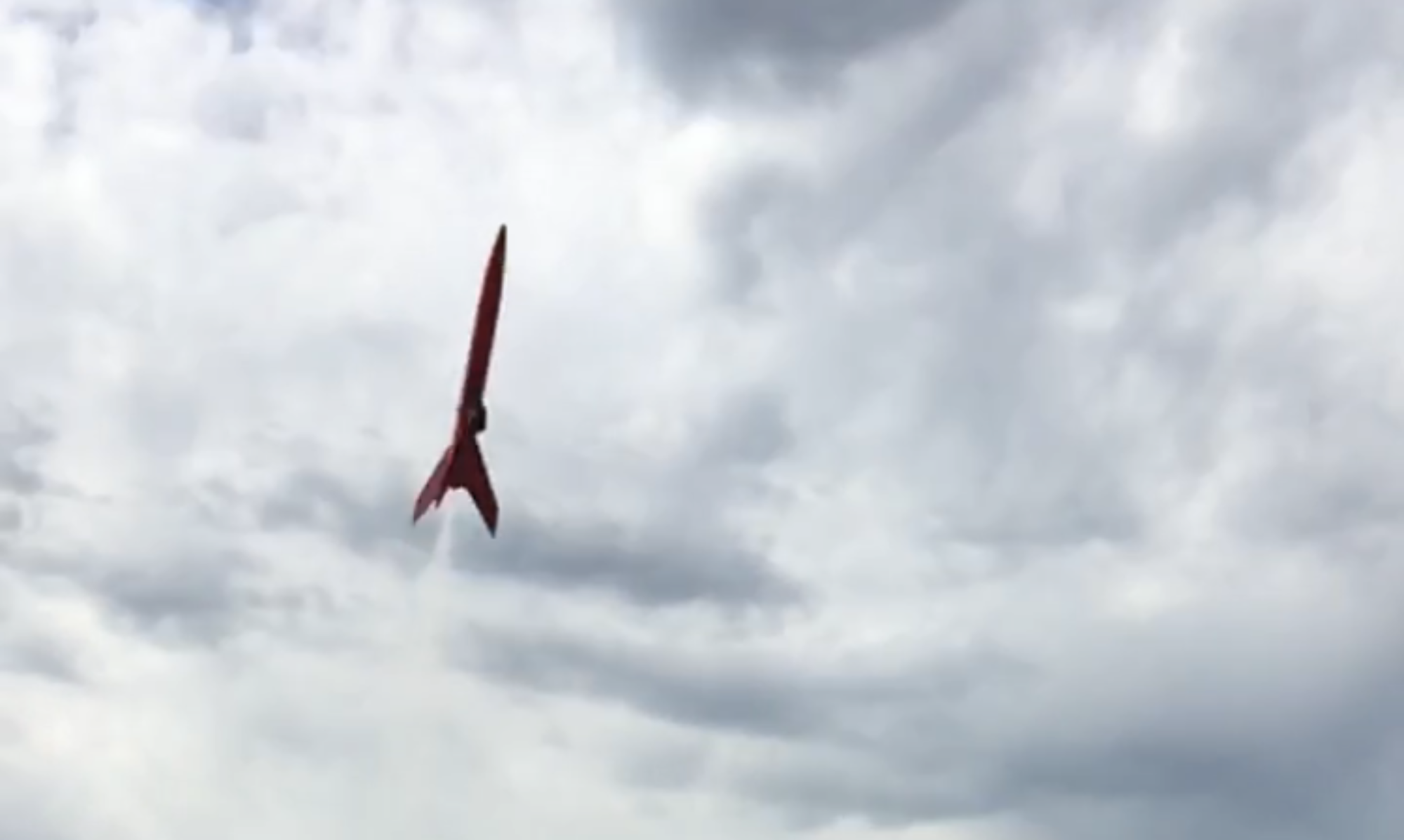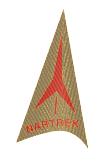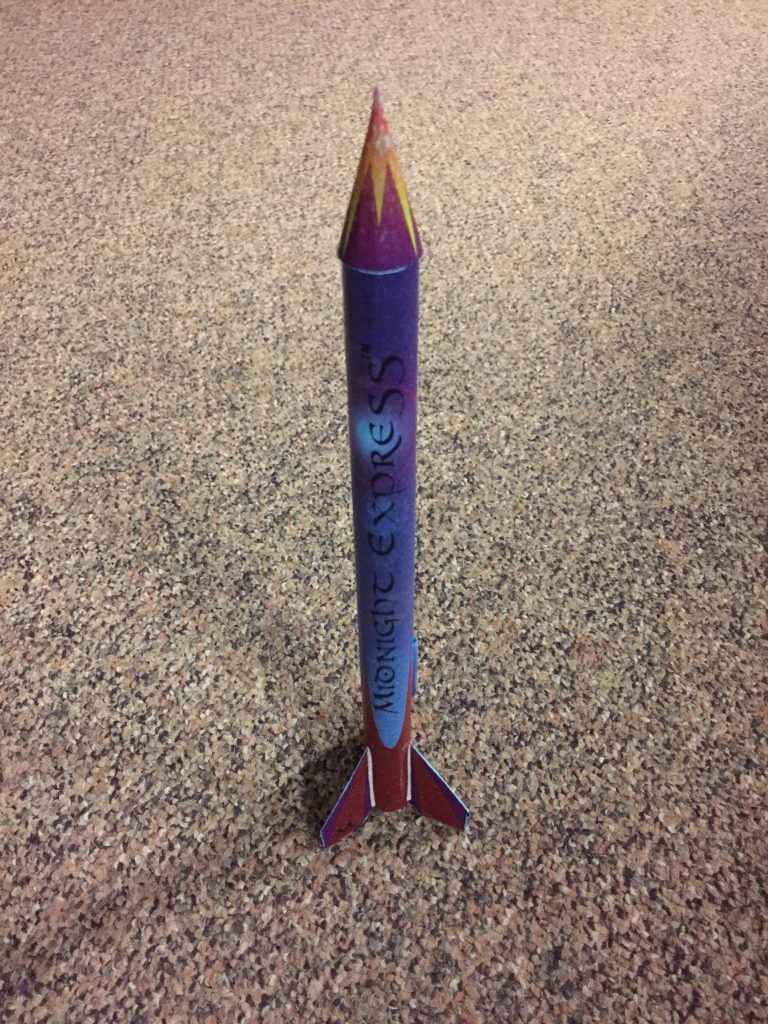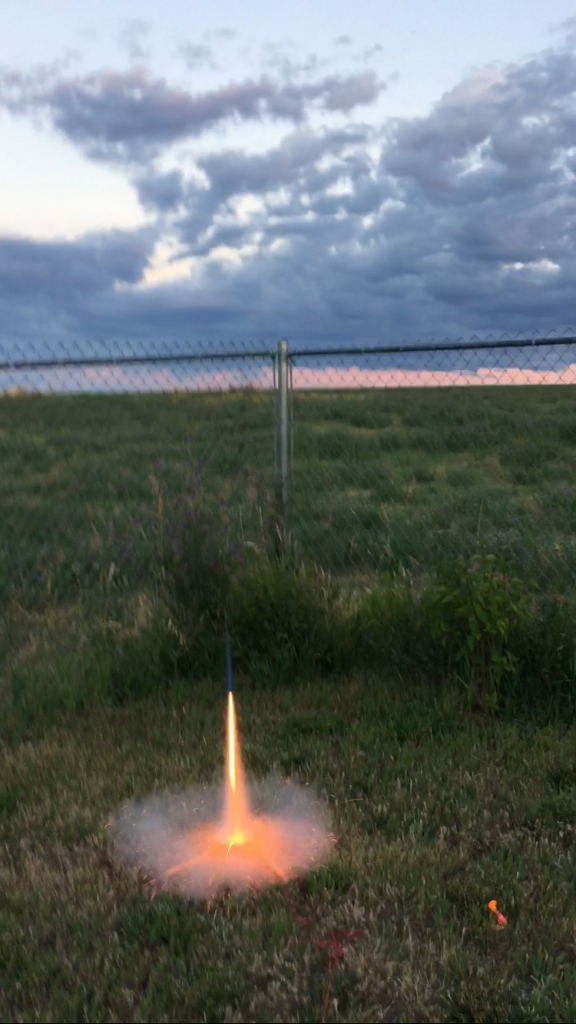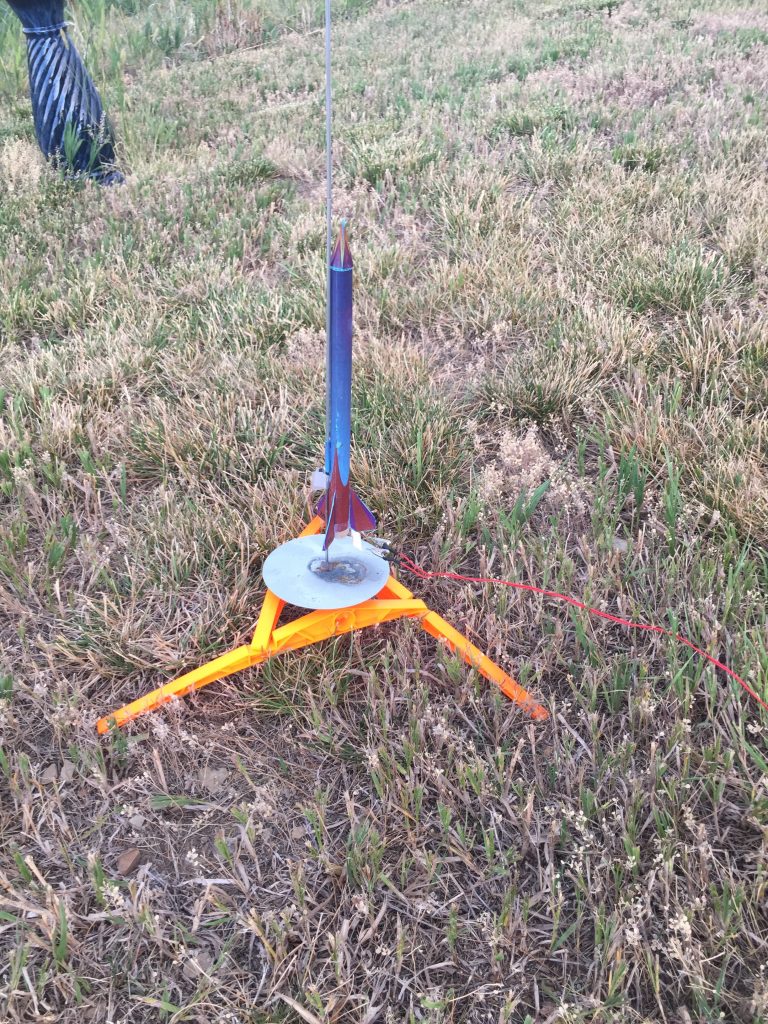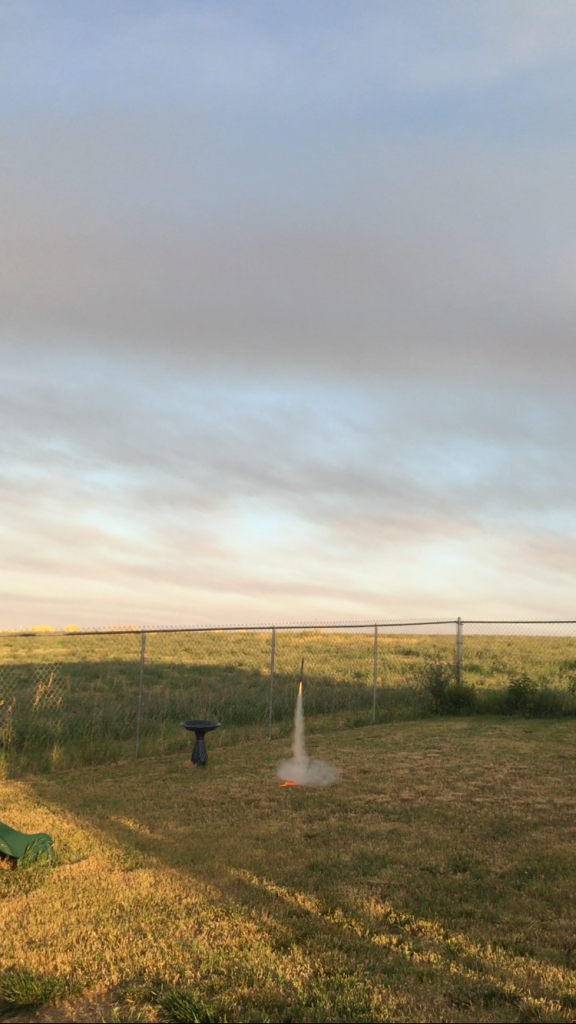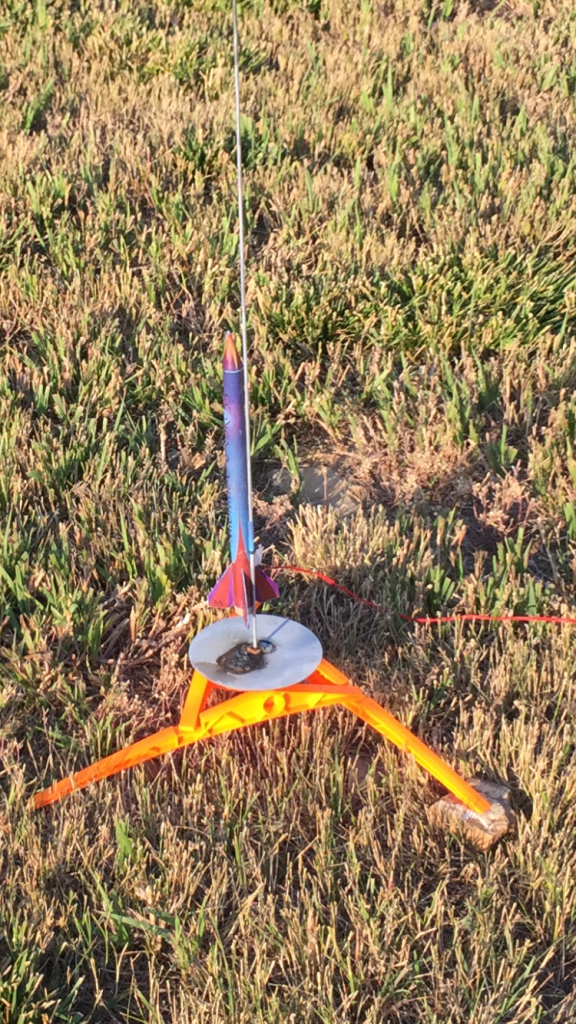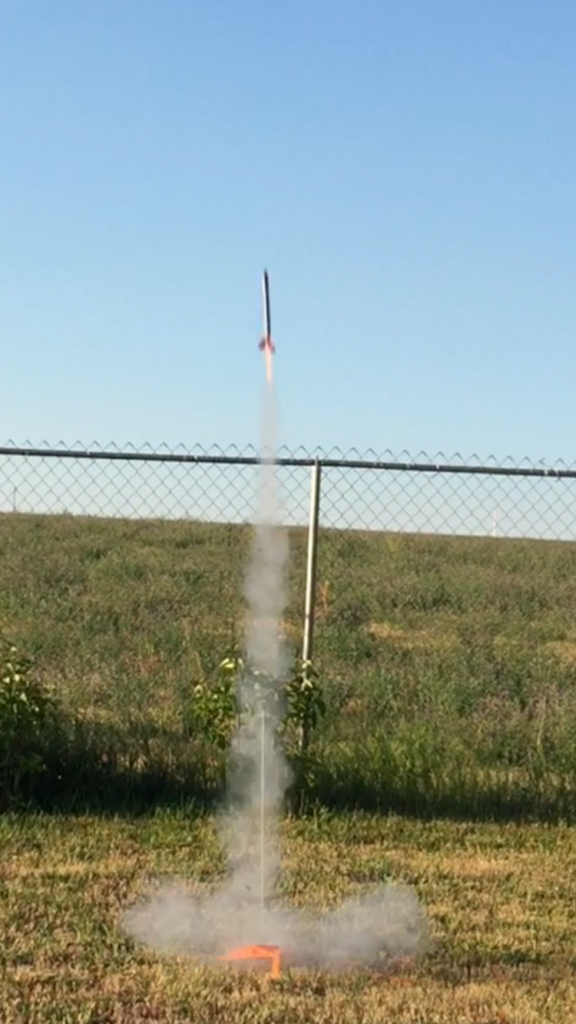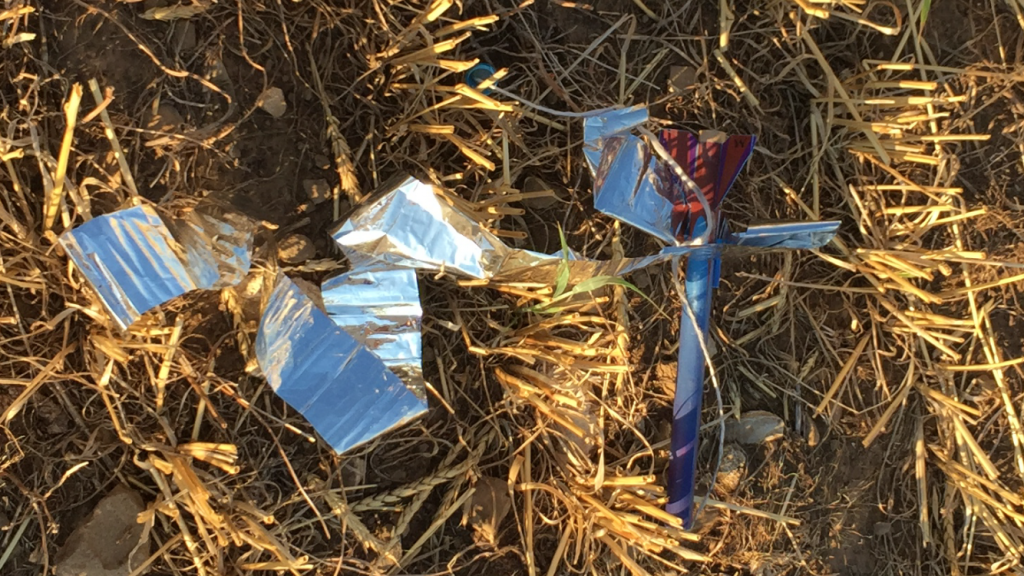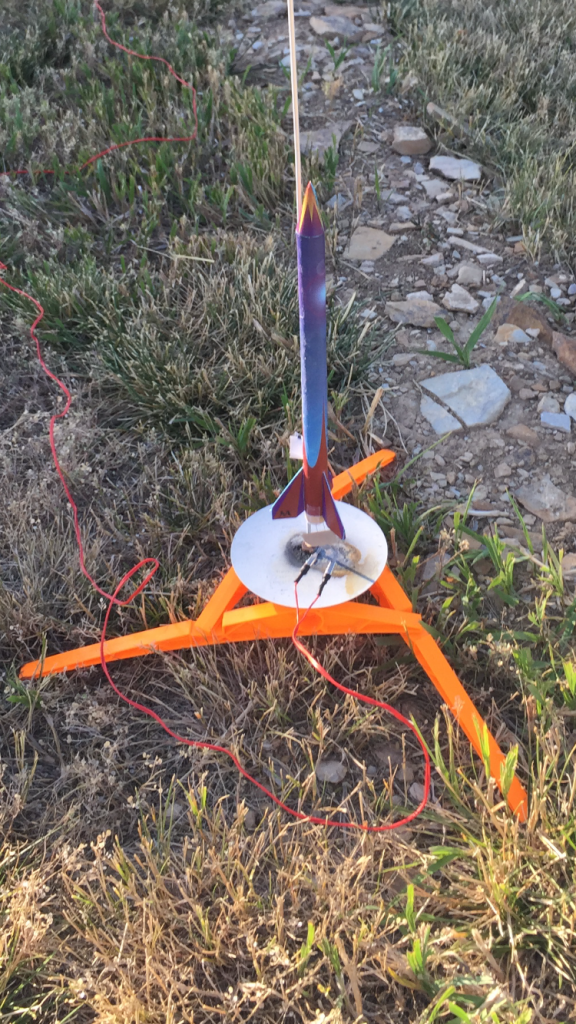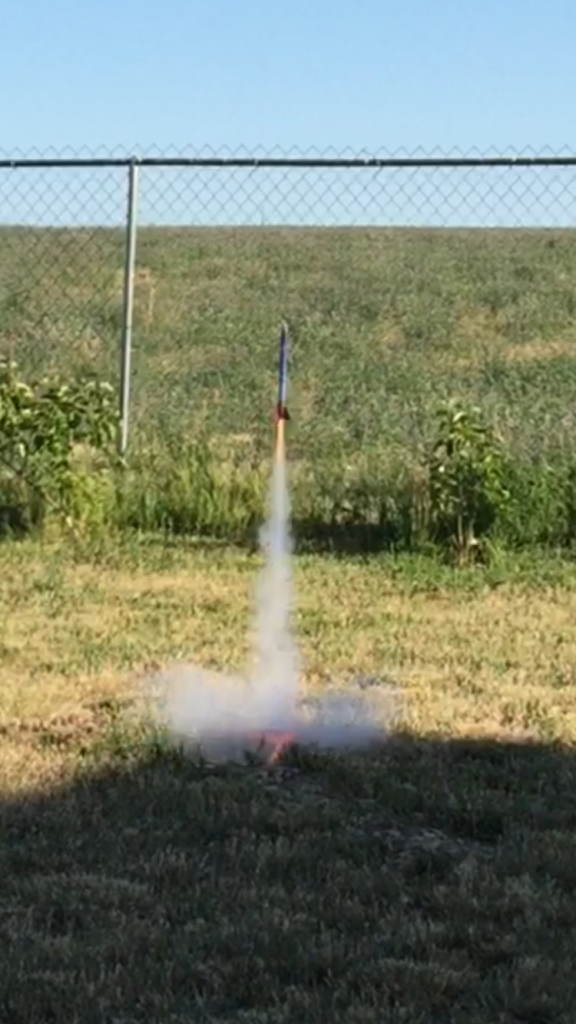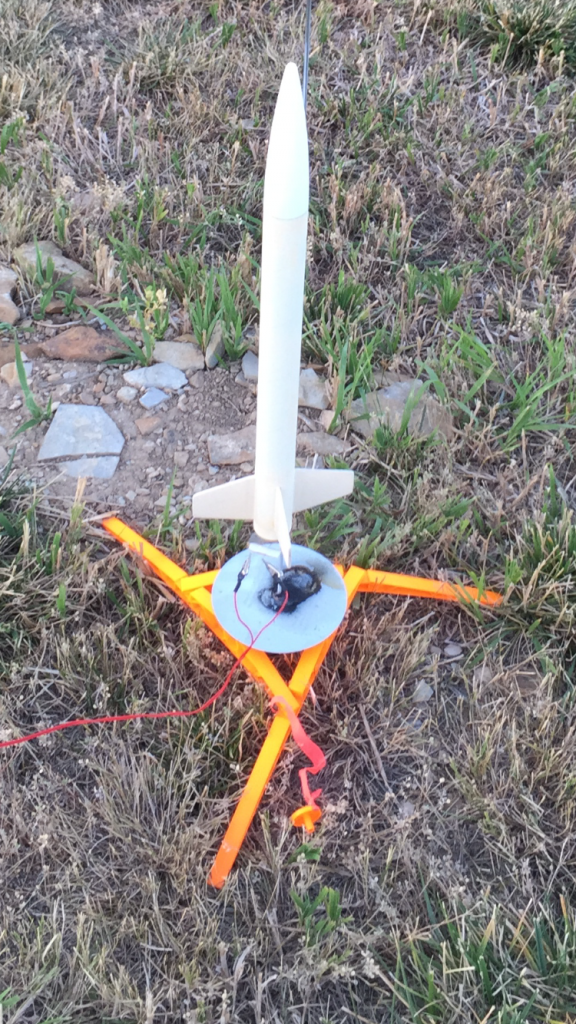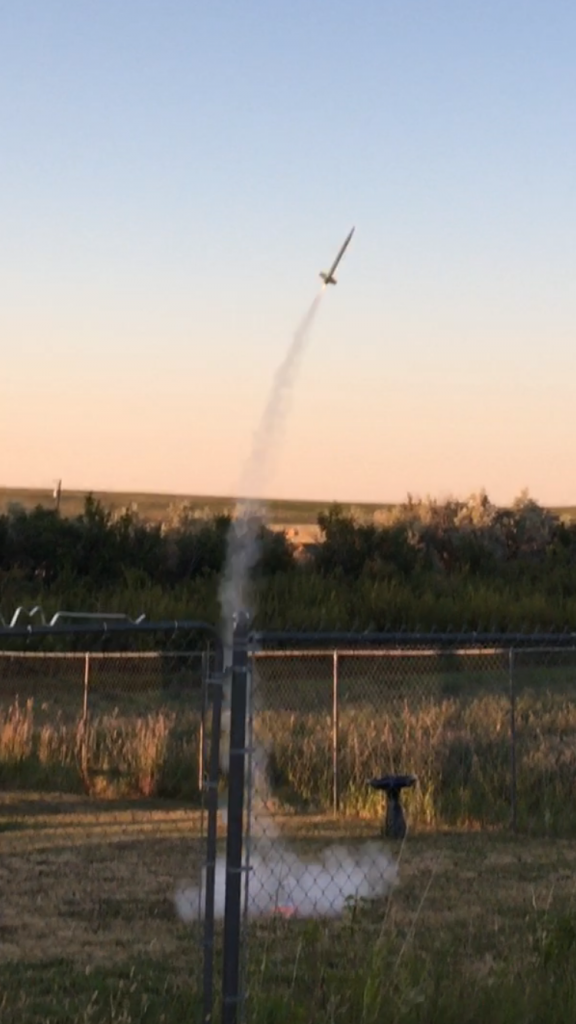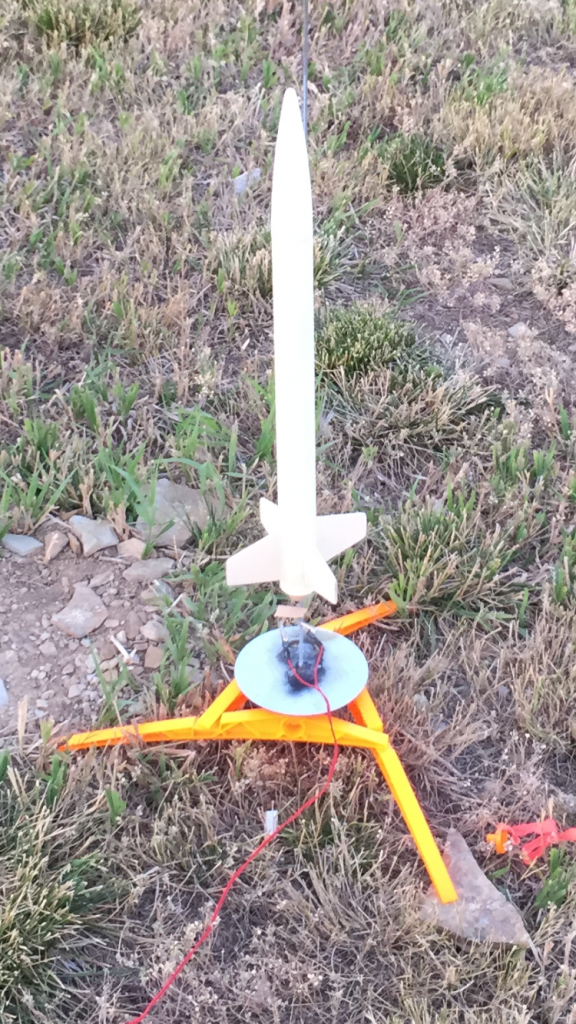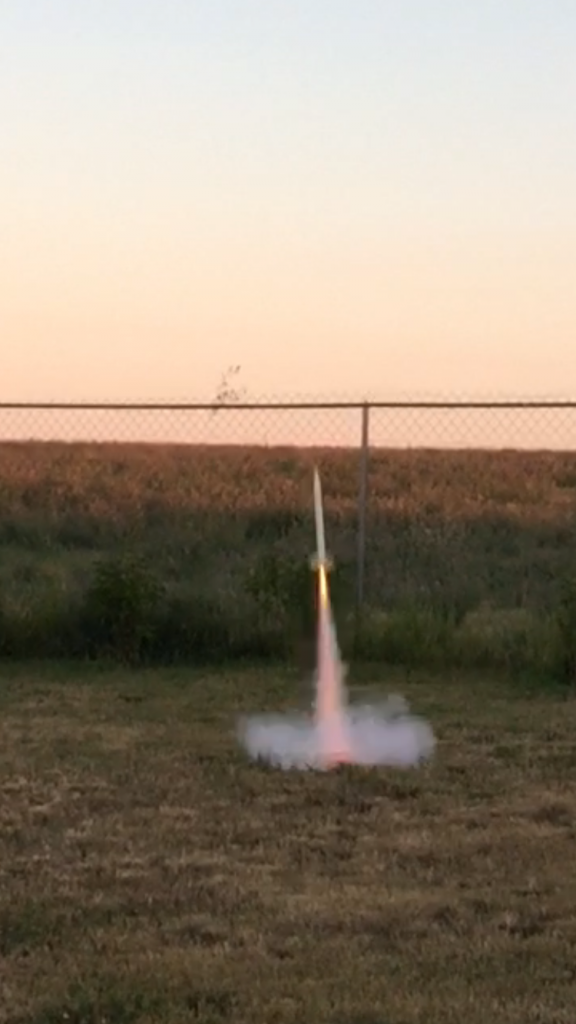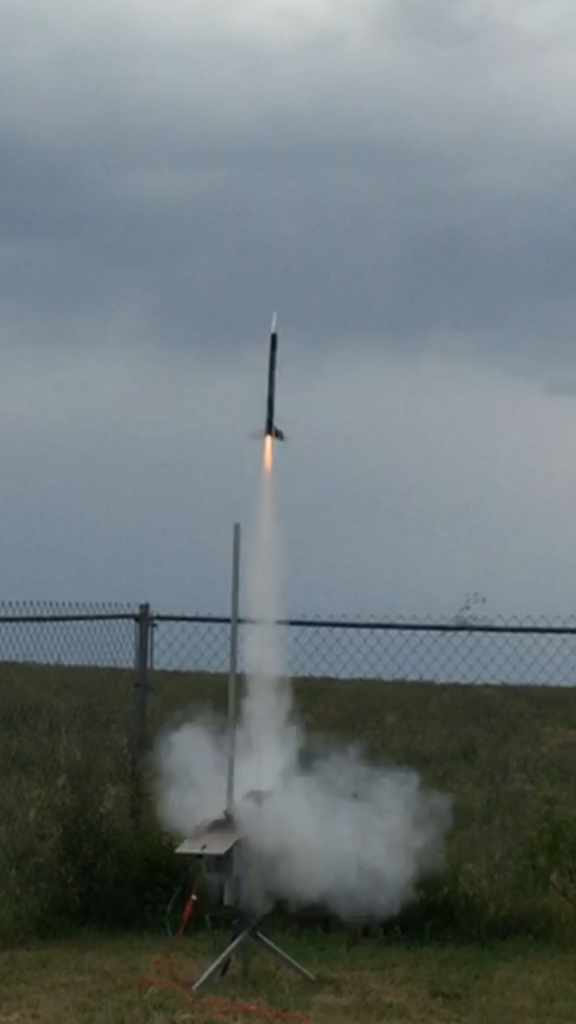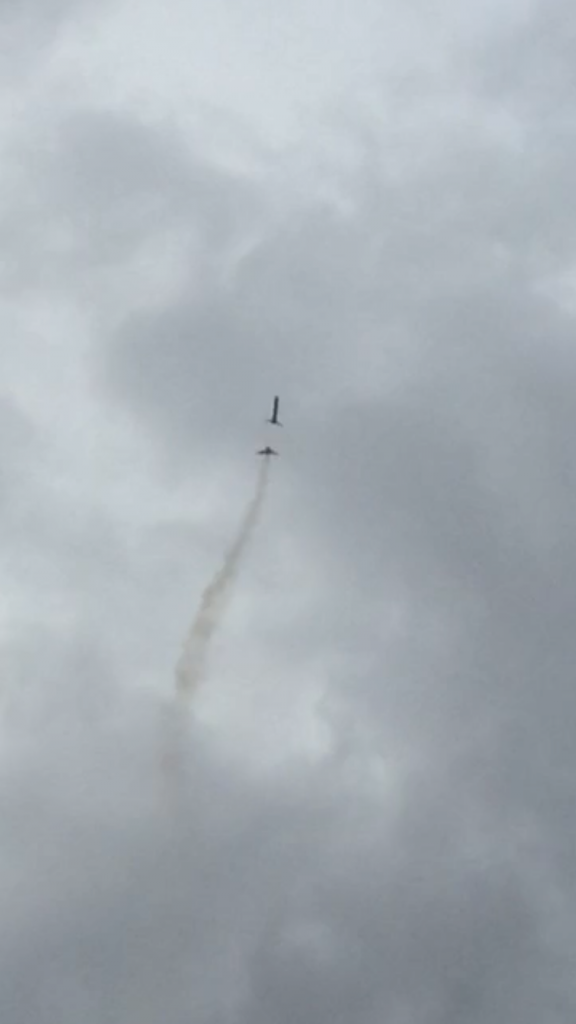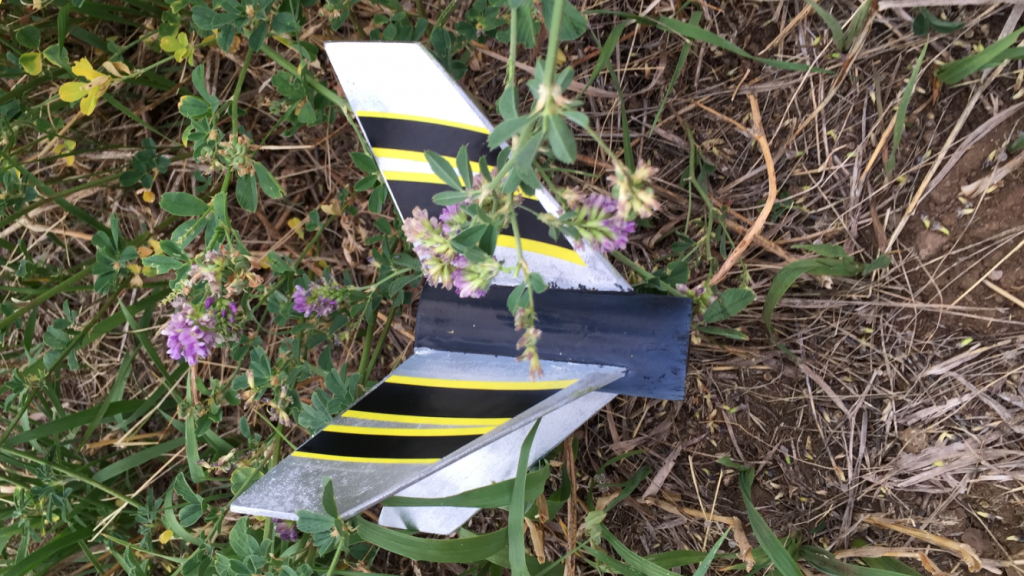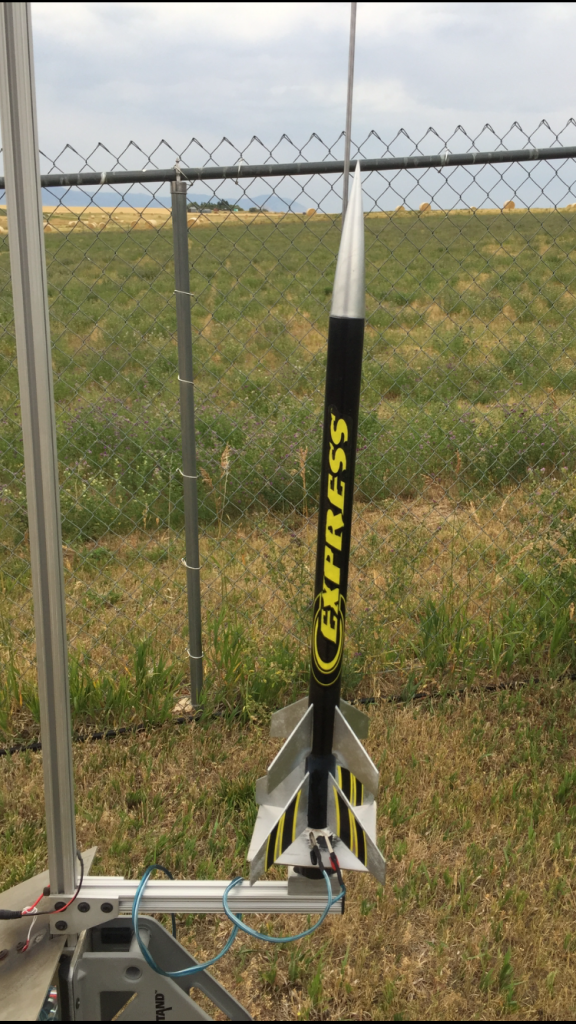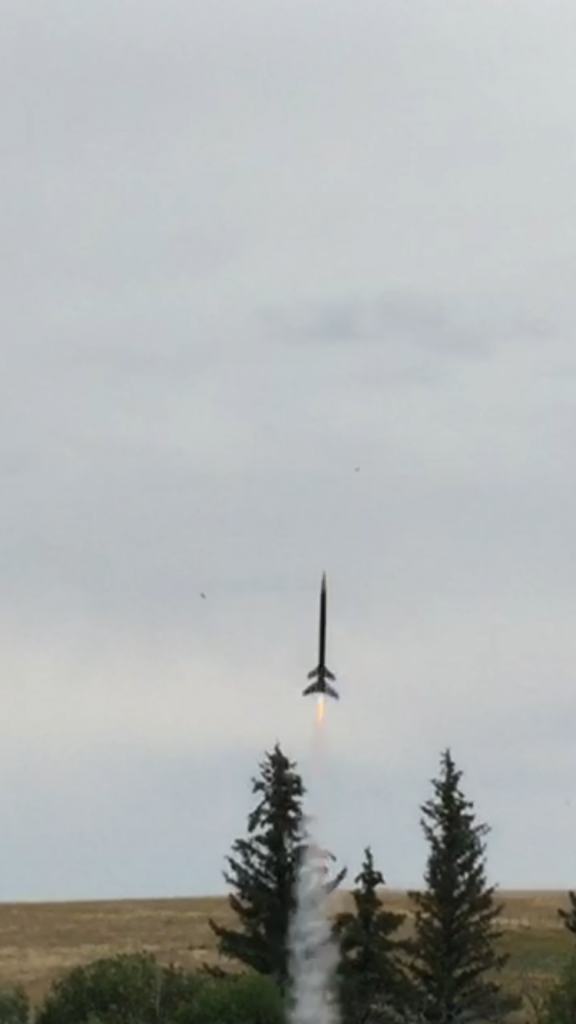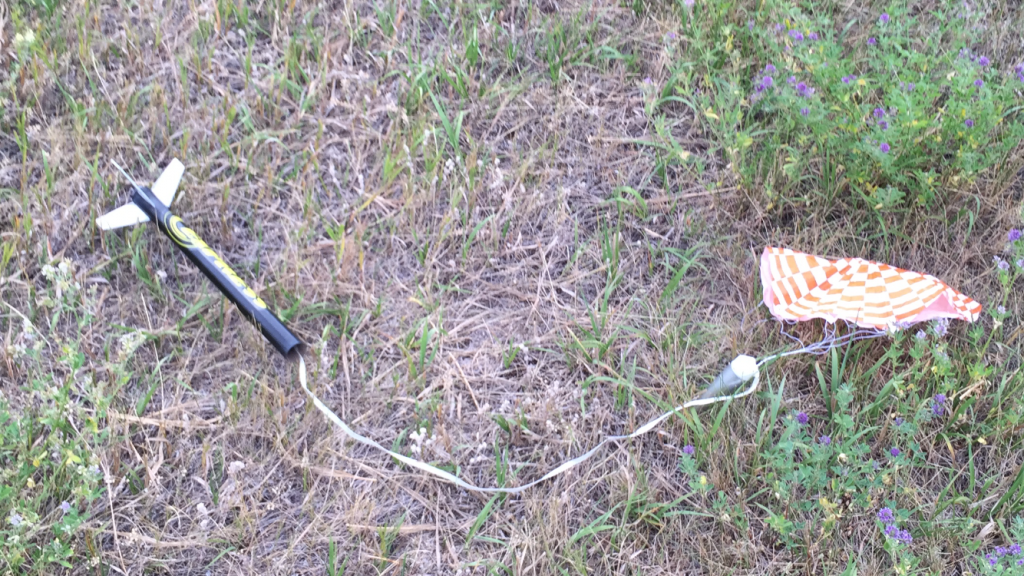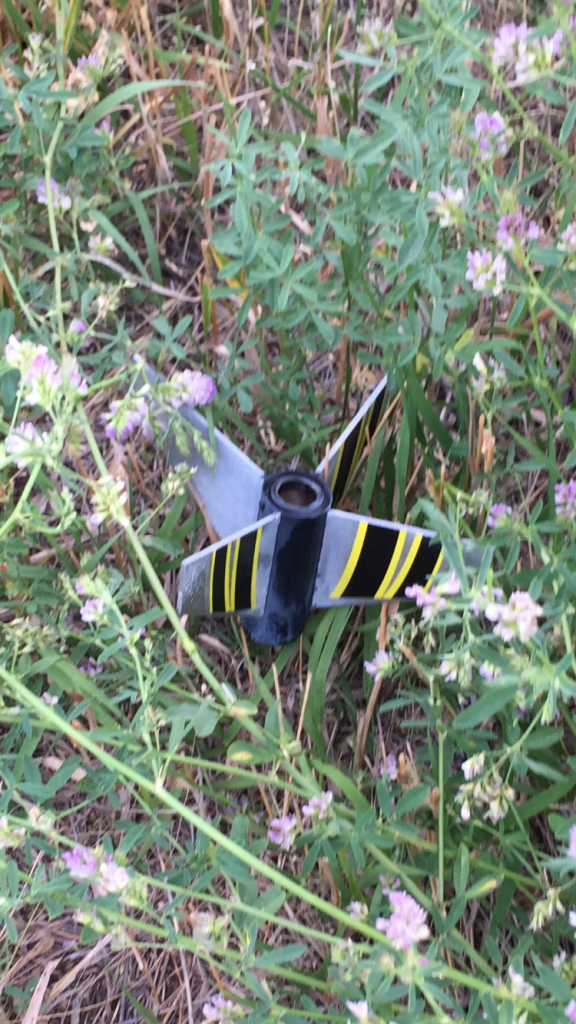This page will chronicle the progress through the National Association of Rocketry’s NARTREK Bronze Achievement program.
In order to successfully complete this program, the following requirements must be met:
1. Make a successful flight of at least 60 seconds duration with a model rocket you have built from an existing model rocket kit of your choice, using a parachute as the recovery device. Use a motor of no more than “B” total impulse. Someone else must time the flight using either a stop watch or a watch with a second hand. Time the flight from the moment the rocket begins to move until it lands again. Complete the requirement certification sheet. Take a photograph of your model and attach it to the certification sheet.
2. Make a successful flight of at least 30 seconds duration with a model rocket you have built from an existing model rocket kit of your choice, using a streamer as the recovery device. Use a motor of no more than “B” total impulse. This model can be the same one used for the parachute duration requirement, with a streamer substituted for the parachute. Someone else must time the flight in the same manner as for the parachute duration flight. Time the flight from the moment the rocket begins to move until it lands again. Complete the requirement certification sheet. If your model is the same one use for the parachute duration requirement you do not have to take another picture of it. Simply note on the requirement certification sheet that it is the same model.
3. Make a successful two-stage model rocket flight using at least a type “A” motor in the lower and upper stages. Use a model built from an existing model rocket kit. You can use the same model rocket you built for the parachute and/or streamer duration requirements if you add a lower stage. Complete the requirement sheet. Take a photograph of the model and attach it to the certification sheet.
4. Make a successful flight of a model rocket that you have built from an existing model rocket kit that is propelled by a type “D” motor, or larger. Take a photograph of your model rocket and attach it to the completed requirement certification sheet.
These individual sections were completed on the following dates, with the following rockets, motors, and, where applicable, times.
#1 – August 1, 2016 – Estes Hornet – Estes B6-4 – 64.59 Seconds
#2 – August 1, 2016 – FlisKits Midnight Express – Estes B6-4 -31.3 Seconds
#3 – August 6, 2016 – Estes CC Express with Booster – Estes C11-0 & Estes D12-5
#4 – August 6, 2016 – Estes CC Express with Booster – Estes C11-0 & Estes D12-5
The sections were not completed in order, and the following provides details for each section and its successful completion.
Make a successful flight of at least 30 seconds duration using a streamer as the recovery device.
The rocket kit chosen for this section was the FlisKits Midnight Express, a “paper rocket” built entirely out of a single 8.5″x11″ piece of card stock. The kit has been provided for free by FlisKits and can be printed out from any computer. After the rocket is cut out, white glue is used for assembly, and cotton or other thread is used for the shock cord. A piece of clay is placed in the nose cone of sufficient weight to move the center of gravity 6.5″ from the rear of the rocket body, providing the necessary stability for the rocket.
ATTEMPT #1 – FAIL (Rocket not recovered)
The first rocket was completed on July 26th, however high winds delayed the launch until July 28th. The engine chosen for the launch was the Estes B6-4, and a 1″ x 36″ surveyor tape streamer was attached to the shock cord for the recovery.
The launch occurred without incident.
The ascent was straight up, however, the rocket’s small size made tracking difficult, and after apogee, the rocket was lost from sight. No deployment event was observed, and the rocket was never recovered.
ATTEMPT #2 – FAIL (Nose cone and streamer separated from rocket body, rocket body not recovered)
A second group of Midnight Express rockets was completed on July 31st, and the next launch occurred that evening. The same engine was used, but the streamer was changed to a Mylar streamer approximately 4″x 36″ made from a cheap survival blanket.
The launch again occurred without incident, although the rocket weather cocked slightly about 10 feet above the ground,
The rocket was successfully tracked to apogee, and the ejection charge was observed to fire, followed by the streamer deployment. The reflective streamer material made tracking easier, but the slow, drifting manner of the decent indicated a possible problem with the rocket. The decent was timed at well over 90 seconds.
The streamer and nose cone were later recovered more than half a mile from the launch site, but the shock cord had burned through, and the main body of the rocket was never recovered.
ATTEMPT #3 – SUCCESS (31.3 Second Flight)
The third rocket was launched on August 1st, again using the B6-4 motor and a Mylar streamer.
The launch was without incident, and the rocket boosted quickly off the pad.
The ascent was straight up, and the rocket was successfully tracked to apogee. An ejection event was observed, and the streamer successfully deployed. The rocket was tracked through the decent to when it touched down, 31.3 seconds after lift-off, satisfying the duration requirement of this section of the Nartrek Bronze Achievement program.
The rocket landed approximately two hundred yards from the launch pad, and was recovered with no damage.
Make a successful flight of at least 60 seconds duration using a parachute as the recovery device.
The FlisKits Midnight Express rocket was again chosen for this section, with a model equipped with an 8″ Mylar parachute setup for the attempt.
ATTEMPT #1 – FAIL (Nose cone separated from body, body not recovered)
On August 1st, the rocket was launched without incident
The rocket was successfully tracked to apogee, and the ejection charge was observed to fire, followed by the parachute deployment. It appeared that the body separated from the parachute and nose cone when the ejection charge fired, and this was later confirmed with the recovery of the nose cone and parachute with a burned through shock cord. The body of the rocket was not recovered. The duration of the flight was just over 50 seconds.
ATTEMPT #2 – FAIL (48 Second Flight)
A decision was made to switch rockets after the repeated failures in the Midnight Expresses’s shock cord, and an unpainted Estes Hornet was chosen for the next attempt. A parachute, that was at least 24″ wide, was cut out of the Mylar survival blanket and attached to the nose cone with 100% cotton thread using the standard six point attachment.
The rocket was again launched on August 1st, but weather cocked significantly shortly after clearing the rod.
The rocket was successfully tracked to apogee, and the ejection charge was observed to fire, followed by the parachute deployment. The rocket was tracked through decent and successfully landed without damage about 300 yards from the launch pad. The duration of the flight was 48 seconds.
ATTEMPT #3 – SUCCESS (64.59 Second Flight)
The rocket was launched for a second time on August 1st, and, having angled the launch pad slightly to account for the wind, made a straight up ascent.
The rocket was successfully tracked to apogee, and the ejection charge was observed to fire, followed by the parachute deployment. The rocket was tracked through decent and successfully landed without damage about 800 yards from the launch pad.
The duration of the flight was 64.59 seconds satisfying the duration of this section of the Nartrek Bronze Achievement program.
Make a successful two-stage model rocket flight.
The Estes CC Express two stage rocket was chosen for this and the last section. The rocket was built per the Estes instructions, and the standard parachute was used for the main recovery device. The booster section used tumble recovery. The booster motor was an Estes C11-0, and the main motor was a D12-5.
ATTEMPT #1 – SUCCESS (Booster section and Main rocket recovered with no damage)
The rocket was launched on August 6th.
The launch was without incident, and the rocket boosted quickly off the pad.
The booster stage successfully separated from the main rocket, and the main motor ignited.
The rocket was successfully tracked to apogee, and the ejection charge was observed to fire, followed by the parachute deployment. The rocket was tracked through decent and successfully landed without damage about 50 yards from the launch pad.
The booster was found about 25 yards from the pad.
Both parts of the rocket were recovered without any damage, satisfying this section of the Nartrek Bronze Achievement program .
Make a successful flight of a model rocket that you have built from an existing model rocket kit that is propelled by a type “D” motor, or larger.
The same Estes CC Express two stage rocket used in section 3 was again chosen for this section. Although the rocket did not need to launch with the booster section to meet the requirement of this section, after the success of the last launch, it was again included. The booster motor was an Estes C11-0, and the main motor was an Estes D12-5.
ATTEMPT #1 – SUCCESS (Main Rocket Motor D12-5, Booster section and Main rocket recovered with no damage)
The rocket was again launched on August 6th.
The launch was without incident.
The booster stage successfully separated from the main rocket, and the main motor ignited.
The rocket was successfully tracked to apogee, and the ejection charge was observed to fire, followed by the parachute deployment. The rocket was tracked through decent and successfully landed without damage about 150 yards from the launch pad.
The booster was found about 40 yards from the pad.
Both parts of the rocket were recovered without any damage after launching with a Estes D12-5 as the main motor, satisfying this section of the Nartrek Bronze Achievement program .
